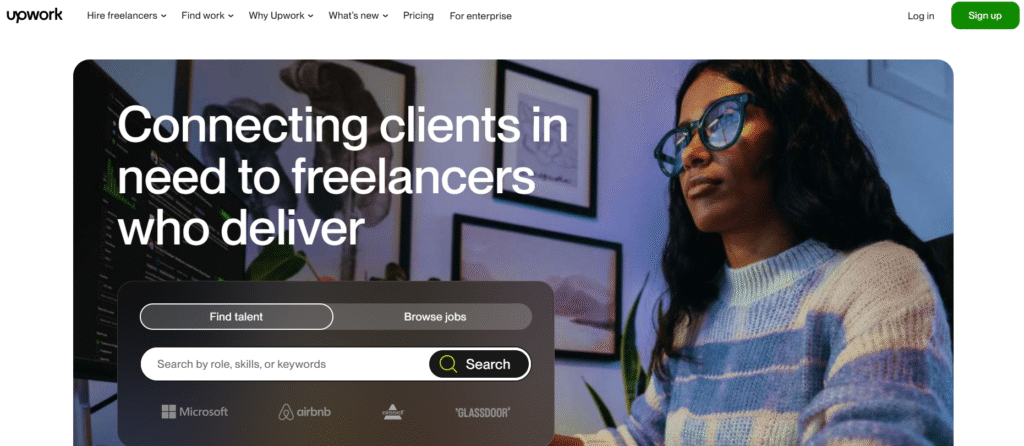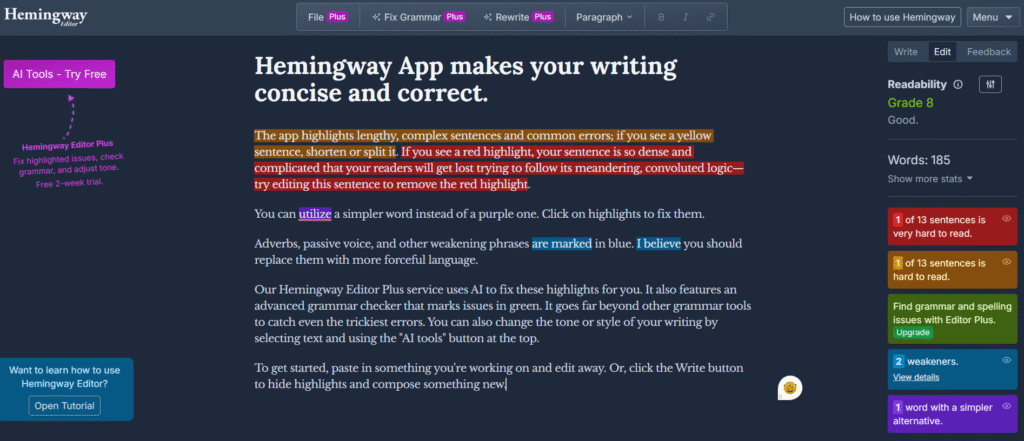How To Make Money Proofreading And Work From Anywhere

You know that feeling when you’re reading something and suddenly spot a typo that makes you physically cringe? Like when a restaurant menu says “you’re welcome” instead of “you’re welcome”?
If that drives you nuts, congrats, you’ve got the exact personality trait that could turn into actual cash.
Proofreading isn’t some boring desk job reserved for retired English teachers anymore.
It’s become a legit way to earn money from literally anywhere, your couch, a beach in Bali, or that coffee shop down the street.
And the best part? People and businesses are practically begging for good proofreaders because, let’s face it, everyone’s pumping out content like crazy and most of it’s riddled with errors.
I’ve watched countless people turn their grammar obsession into a steady income, and honestly, it’s one of those rare opportunities where low startup costs meet genuine flexibility.
Let me walk you through exactly how you can start making money with those eagle eyes of yours.
What Is Proofreading?
Proofreading is basically being the last person standing between polished content and embarrassing mistakes.
You’re hunting down grammar mess-ups, punctuation problems, spelling disasters, and formatting inconsistencies before anything goes live.
Here’s what separates proofreading from editing: editing focuses on making content flow better and sound clearer, while proofreading is all about accuracy.
You’re not rewriting sentences or suggesting new ideas; you’re catching the tiny mistakes that make content look unprofessional.
Think about it this way: a proofreader is like quality control in a factory. The content’s already created, but you’re making sure it’s actually ready for public consumption.
Whether someone’s publishing a blog post, releasing a book, submitting an academic paper, or sending out marketing emails, they need proofreaders to catch what they missed.
The beautiful thing about this skill? It’s low-stress compared to most jobs.
You’re not dealing with angry customers or impossible deadlines (usually). You’re just reading carefully and marking errors.
If you’ve got attention to detail and solid grammar knowledge, you’re already qualified.
How Much Money Can You Make As A Proofreader?
Let’s talk dollars because that’s what actually matters, right?
Your earning potential as a proofreader depends on how you structure your services. Most freelance proofreaders charge in one of three ways:
Per Hour: Expect anywhere from $20 to $30 when you’re starting. Experienced proofreaders with specialised knowledge? They’re pulling in $75 or more per hour.
I’ve personally seen medical and legal proofreaders charge $100+ because they’re working with complex terminology.
Per Word: This typically ranges from $0.01 to $0.05 per word. A 2,000-word article at $0.03 per word nets you $60. Not bad for work you can do in an hour or two once you’re efficient.
Per Project: Bigger projects like book manuscripts can range from $500 to $3,000, depending on length and complexity. Authors often prefer project-based pricing because it’s predictable.
Now here’s the reality check: your income depends heavily on your niche.
General blog proofreading pays decent money, but specialising in academic papers, legal documents, or medical content bumps your rates significantly.
Why? Because you need specialised knowledge, and clients understand that expertise costs more.
From a financial perspective, let’s do some quick math. If you charge $25 per hour and work 20 hours weekly, that’s $500 per week or $2,000 monthly.
Go full-time at 40 hours? You’re looking at $4,000+ per month. FYI, remember you’re self-employed, so set aside roughly 25-30% for taxes.
The income ceiling is pretty high if you play your cards right.
I know proofreaders who’ve built six-figure businesses by specializing, building solid client relationships, and eventually subcontracting work to other proofreaders.
How To Become A Proofreader
Alright, so you’re convinced this could work for you. How do you actually become someone clients trust with their content?
1. Understand The Role Of A Proofreader

Before you jump in, get crystal clear on what proofreading actually involves.
You’re meticulously reviewing content to spot and fix errors in grammar, punctuation, spelling, and formatting. Your job is to ensure the final product looks professional and polished.
Proofreaders work with all kinds of content:
- Academic papers where you’re checking citations, clarity, and grammatical accuracy
- Books and manuscripts that need consistency checks and typo hunting
- Business documents like reports, proposals, and marketing materials that represent companies
- Online content, including blog posts, social media, and website copy
Each content type has different requirements and expectations. Academic proofreading follows specific style guides like APA or MLA.
Business content needs crisp, clear language. Understanding these differences makes you way more valuable to clients.
2. Develop Essential Skills
You need more than just “being good at English” to succeed as a proofreader.
When I first started proofreading, I thought my English skills from school were enough. That illusion broke fast when a client returned my first project with twenty marked errors.
I was embarrassed but it became my turning point.
I spent a few weeks studying punctuation rules and style guides like my life depended on it.
The next time I delivered work, the client sent me a simple message: “Perfect. No edits needed.”
That single feedback taught me that mastering the basics really mastering them is what separates a casual reader from a professional proofreader.
First up: grammar, punctuation, and syntax mastery. You should know the difference between a semicolon and a comma without Googling it.
Understanding verb tenses, subject-verb agreement, and sentence structure is non-negotiable.
Next: attention to detail. I’m talking about the ability to focus intensely on text and catch things most people skim right past.
Misplaced commas, inconsistent capitalisation, subtle spacing issues- you need to spot them all.
You also need consistency checking skills. If a document uses “email” on page one, it had better not switch to “e-mail” on page five.
Catching these inconsistencies is huge for maintaining professionalism.
Finally: time management. Clients have deadlines, and you’ll juggle multiple projects.
Being able to estimate how long proofreading takes and delivering on time separates professionals from amateurs.
All these skills are learnable. Nobody’s born knowing AP Style or the Chicago Manual of Style; you pick them up through practice and study.
3. Gain Knowledge And Training

While proofreading doesn’t require a fancy degree, getting proper training gives you a massive competitive advantage.
Plenty of online courses teach proofreading specifically. These programs cover grammar fundamentals, introduce you to different style guides (APA, MLA, and Chicago), and teach you how to apply them to various content types.
Investing in structured training shows potential clients you’re serious about your craft.
It also fills in knowledge gaps you might not even know you have. I can’t tell you how many self-taught proofreaders.
I’ve seen struggle because they never learned the difference between style guides or how to use track changes properly.
Style guides are crucial because different industries use different rules. Journalism follows AP Style. Book publishing uses the Chicago Manual of Style.
Academic writing follows APA, MLA, or other specialized guides. Learning these makes you versatile and valuable.
4. Build Experience
Here’s where rubber meets the road. You can study all you want, but you need actual proofreading experience to build credibility.
Start by volunteering your services. Local businesses, community groups, or friends who need help with their writing will gladly accept free proofreading.
Yeah, working for free sounds counterproductive, but these initial projects give you practice and lead to referrals.
Reach out directly to businesses, authors, or content creators who might need proofreading.
Many small business owners publish blog content regularly and would love someone to catch their errors before publishing.
Consider offering heavily discounted rates for your first 5-10 clients in exchange for detailed testimonials.
These testimonials become gold when you’re pitching new clients.
Every project you complete adds to your experience and teaches you something new about different writing styles, industries, and client expectations.
When I first started, I had zero clients and no formal experience. So, I took a different approach.
I found poorly written blog posts on Medium and rewrote them (just for practice).
I compiled three of those “before and after” samples into a simple PDF and uploaded it to Google Drive.
One day, I replied to a Facebook post from a small business owner looking for a proofreader. Instead of just saying, “I can help,” I dropped the link to my portfolio.
Within an hour, she replied:
“I love how you highlight your changes — it’s exactly what I’ve been looking for!”
That one message led to my first $80 project. And that client later referred me to two others.
Moral of the story? Your portfolio speaks louder than your pitch.
Even if you’re just starting out, build one it turns “I can do this” into “I’ve already done this.”
You can showcase your portfolio on a personal website or use portfolio platforms like Canva or Behance.
These platforms let you present work professionally without needing web design skills.
Make sure your portfolio itself is error-free. Nothing tanks your credibility faster than typos in your own marketing materials.
Have someone else proofread your portfolio before it goes live (yes, even proofreaders need proofreaders sometimes:/).
6. Start Finding Gigs
Once you’ve got skills and a portfolio, it’s hunting season for clients.
Freelance platforms are the easiest starting point. Sign up on Upwork, Fiverr, and Freelancer. Create compelling profiles that highlight your skills and experience.
These platforms have tons of proofreading jobs posted daily.
I’ll never forget my first paid gig on Upwork $25 for proofreading a short eBook.
I spent hours perfecting it, terrified the client would hate my work. Instead, he left a glowing review that opened doors to more clients.
That one job proved this wasn’t just a hobby it was the start of a real career.
Network like crazy. Connect with writers, editors, and content creators who might need your services. Join Facebook groups related to writing and content creation.
Comment thoughtfully, offer value, and mention your proofreading services when appropriate.
Check job boards regularly. Sites like ProBlogger, FlexJobs, and LinkedIn constantly post proofreading gigs.
Set up alerts so you’re notified when new jobs match your criteria.
Promote on social media. LinkedIn is perfect for B2B proofreading services. Facebook groups in your niche can connect you with potential clients. Just don’t be spammy, provide value first, sell second.
Landing your first few clients is always the hardest part. Once you’ve got testimonials and proven reliability, clients start finding you through referrals and reputation.
10 Best Websites For Finding Proofreading Jobs
Let me break down the best platforms where you can actually find paying proofreading work. Each has different vibes, pay structures, and client types.
1. Upwork

Upwork is basically the giant of freelance platforms. It’s got proofreading jobs ranging from quick one-off projects to long-term contracts.
Upwork was where I learned patience. I applied to over 20 jobs before landing one.
But after completing a few small gigs and earning five-star reviews, I became a “Top Rated” freelancer and that badge brought more clients than I could handle.
You create a profile showcasing your skills, set your rates, and bid on projects that interest you.
New proofreaders can start with smaller tasks to build a reputation, then gradually take on bigger, better-paying work.
The downside? Upwork charges service fees ranging from 5% to 20% depending on how much you’ve earned from a client.
Also, competition is fierce, so you’ll need a solid profile and competitive rates to stand out initially.
2. Fiverr
Fiverr gets a bad rap for being cheap, but it’s actually excellent for building your portfolio fast.
You create “gigs” offering specific services at set prices. Start with something like “I’ll proofread 1,000 words for $10” and build from there.
As you get positive reviews, you can increase prices and add premium packages.
Fiverr felt slow at first, but one clever move changed it: I added sample screenshots of edits. Within a week, I had three new buyers.
Over time, my gig climbed to page one proof that presentation sells your skills before your words do.
Many successful proofreaders use Fiverr to attract clients, then convert them to direct clients outside the platform (though technically that violates Fiverr’s terms, so do with that what you will).
3. FlexJobs
If you’re tired of wading through sketchy job posts and lowball offers, FlexJobs is your friend.
I discovered FlexJobs after wasting hours on scammy sites. Here, every job was vetted real companies, real pay.
My first remote proofreading job for a publishing firm came through FlexJobs, and it paid more than anything I’d earned before.
This platform hand-picks legitimate remote job listings, including proofreading positions.
You pay a subscription fee (around $15 monthly), but in exchange, you get vetted, professional opportunities without spam.
FlexJobs is particularly good for finding steady employment rather than one-off freelance gigs.
Companies post remote proofreading positions here that often come with benefits and stable income.
4. ProofreadingServices.com
ProofreadingServices.com is specifically designed to connect freelance proofreaders with clients needing editing services.
You’ll need to pass a proofreading test to join, which ensures quality standards.
Once you’re in, you get access to competitive rates and diverse proofreading jobs, including academic papers and business documents.
The testing requirement might seem annoying, but it actually works in your favour by filtering out unqualified competition.
5. Clickworker
Clickworker is a micro-tasking platform where you complete small tasks for pay, including proofreading.
It’s perfect for beginners who want to build experience quickly without the pressure of landing big clients.
Tasks are bite-sized and plentiful, though individual pay is lower than traditional freelancing.
Think of Clickworker as proofreading practice that actually pays.
You won’t get rich here, but you’ll sharpen your skills and earn money simultaneously.
6. EditFast
EditFast specialises in connecting proofreaders with clients needing high-quality editing and proofreading services.
This platform particularly appeals to professionals with niche expertise in legal, academic, or medical proofreading.
The pay reflects that specialisation; rates are higher than on general platforms.
To join, you must apply and undergo thorough vetting, including submitting work samples.
This selectivity means less competition and better-paying clients once you’re accepted.
7. Gramlee

Gramlee focuses on higher-paying editing tasks for professional clientele, including businesses, authors, and academic professionals.
The selection process is rigorous, but that’s exactly why pay rates are better. You’re working with clients who understand quality costs money and are willing to pay for it.
If you’ve got solid experience and want to move beyond bargain-basement rates, Gramlee is worth the application effort.
8. Cactus Communications
Cactus Communications is a global provider specialising in academic, medical, and scientific documents.
This platform is ideal if you have expertise in these specialised fields. They hire freelance proofreaders on a project basis, and while they require subject-matter knowledge, the pay reflects that expertise.
My first academic proofreading job came through Cactus.
It was intimidating research papers full of jargon but I learned how to handle technical writing without losing clarity.
That skill became my niche later on.
If you’ve got a background in science, medicine, or academia, Cactus Communications lets you leverage that knowledge for premium rates.
9. Scribendi
Scribendi is one of the most well-known proofreading and editing services, offering freelance positions to experienced editors and proofreaders.
They’ve got a strong reputation for quality, which means stable work with reliable pay.
The platform serves diverse clients, including authors, students, businesses, and ESL learners.
Getting hired by Scribendi requires passing their editing test, but once you’re in, you’ve got access to consistent work opportunities.
10. Reedsy
Reedsy is specifically designed for book publishing professionals, connecting authors and publishers with freelance proofreaders, editors, and writers.
This platform is perfect if you want to specialise in proofreading books, manuscripts, and long-form content.
Authors come to Reedsy specifically seeking quality professionals, so rates tend to be higher than on general platforms.
To join, you need to apply and demonstrate your qualifications. Once approved, you can set your own rates and connect directly with authors seeking proofreading services.
5 Must-Have Tools For Proofreaders
Want to work faster and catch more errors? These tools are game-changers for professional proofreaders.
1. Grammarly
Grammarly is probably the most popular proofreading tool out there, and for good reason.
It catches grammar, spelling, punctuation, and style issues you might miss during manual proofreading. The premium version offers advanced suggestions on tone, clarity, and engagement.
I use Grammarly as a safety net; it catches the occasional slip-up when my brain goes on autopilot. Just remember it’s a tool, not a replacement for human judgment.
Sometimes it suggests changes that sound robotic or miss context entirely.
2. ProWritingAid
ProWritingAid provides a comprehensive analysis of writing, including grammar, style, sentence structure, and readability scores.
This tool is particularly useful for longer documents like articles, essays, or manuscripts. It analyses large chunks of text without feeling overwhelming and provides detailed reports on different aspects of writing.
The interface takes some getting used to, but once you’re familiar, it becomes incredibly powerful for catching patterns in errors and improving overall content quality.
3. Hemingway Editor

Hemingway Editor focuses on readability rather than just grammar.
It highlights complex sentences, passive voice, and unnecessary adverbs that could be simplified.
For proofreaders working on content meant for general audiences, this tool ensures text is clear and accessible.
I particularly love Hemingway for business and blog content where readability matters more than academic precision. It helps make writing punchy and engaging.
4. Ginger Software
Ginger Software is a powerful proofreading tool that catches grammar and punctuation errors quickly.
It offers sentence rephrasing suggestions and even translation services for multilingual proofreading.
Ginger’s ability to suggest alternative sentence structures helps refine writing and make it more impactful.
The tool works across multiple platforms and integrates with various applications, making it convenient for proofreaders working in different environments.
5. QuillBot
QuillBot is an AI-powered tool that assists with paraphrasing and rewording text.
While not strictly a grammar checker, QuillBot is valuable when you need to rephrase sentences for clarity or style while maintaining original meaning.
It uses advanced algorithms to understand context and suggest better phrasing.
This tool is particularly useful when you’re proofreading content that’s technically correct but awkwardly worded.
It helps bridge the gap between editing and proofreading.
Starting Your Own Proofreading Business
If you’re thinking bigger than just freelancing, like building an actual business, here’s your roadmap.
1. Lay The Groundwork
Before anything else, figure out your niche and target market.
Proofreading spans multiple industries: academic, medical, legal, corporate, publishing, and more.
Trying to serve everyone means you’re actually serving no one particularly well. Pick a niche where you’ve got knowledge or a genuine interest.
Your target market determines everything from pricing to marketing strategy. Academic proofreading targets students and researchers.
Business proofreading targets companies and entrepreneurs. Book proofreading targets authors and publishers. Get specific about who you’re serving.
Also, figure out your business structure. Are you operating as a sole proprietor, LLC, or something else?
This affects taxes and liability. IMO, starting as a sole proprietor is easiest, then transitioning to an LLC once you’re making consistent money.
2. Start Up Your Online Presence
You need a professional website that acts as your digital storefront.
Your website should showcase your services, qualifications, portfolio, client testimonials, and contact information.
It doesn’t need to be fancy, clean, professional, and informative beats flashy every time.
Platforms like WordPress or Wix make building websites dead simple, even if you’re not tech-savvy.
Include a blog where you share proofreading tips or writing advice; this helps with SEO and positions you as an expert.
Make sure your website is mobile-friendly since many clients will find you on their phones.
And please, triple-check your site for errors. Nothing kills credibility faster than typos on a proofreader’s website.
3. Offer Structured Services
Clearly define what you’re offering so clients understand exactly what they’re getting.
Create specific service packages rather than vague “proofreading services.” For example:
- Basic Proofreading: Grammar, spelling, punctuation corrections
- Advanced Proofreading: Everything in basic plus consistency checks and formatting
- Premium Package: Proofreading plus light editing and readability improvements
Structure creates clarity. Clients appreciate knowing exactly what they’re paying for, and you avoid scope creep where clients expect more than you agreed to provide.
4. Price Your Services Strategically
Pricing is tricky because you’re balancing market rates, your experience, and what clients will actually pay.
Research what other proofreaders in your niche charge. Look at profiles on Upwork, check websites of established proofreaders, and join proofreading Facebook groups where people discuss rates.
Don’t price yourself at the bottom, trying to compete on cost; it rarely works out.
Clients who only care about cheap prices are usually the most difficult to work with. Position yourself as providing quality service at fair prices.
Start slightly below market rate if you’re new, then raise prices every 3-6 months as you gain experience and testimonials.
Your rates should reflect your growing expertise and efficiency.
5. Marketing And Client Acquisition
You can be the world’s best proofreader, but if nobody knows you exist, you’re not making money.
Networking is huge. Attend industry events (or virtual events), join professional organisations, and connect with authors, editors, and other professionals who need proofreading.
Content marketing works incredibly well for proofreaders. Publish blog posts about writing tips, common grammar mistakes, or proofreading advice.
This attracts potential clients through search engines and demonstrates your expertise.
Social media marketing on platforms like LinkedIn and Twitter can connect you with clients.
Share useful writing tips, engage with others’ content, and position yourself as someone knowledgeable and helpful.
Email marketing to past clients keeps you top-of-mind for repeat business. Send occasional newsletters with writing tips or special offers.
6. Manage Your Business Efficiently
As your proofreading business grows, you need systems to stay organised.
Use project management tools like Trello or Asana to track tasks and deadlines.
Client management software helps you stay organized and communicate effectively.
Invest in accounting software like QuickBooks or Wave to track income, expenses, and taxes.
Trust me, trying to organize finances from memory during tax season is a nightmare.
Create templates for common emails, contracts, and invoices. This saves massive time and ensures consistency in your communications.
7. Grow Your Business
Once you’ve got a steady income and consistent clients, focus on growth.
Consider expanding your services to include editing, writing, or consulting. Taking on larger projects or longer-term contracts provides income stability.
Building relationships with regular clients creates steady income streams. One client who sends you work weekly is worth way more than ten one-off projects.
You could also hire other proofreaders to handle overflow work. This lets you scale beyond your personal time limitations.
You manage client relationships and quality control while subcontractors do the actual proofreading.
Another growth avenue is creating digital products like ebooks, courses, or templates for aspiring proofreaders. This adds passive income alongside your active proofreading work.
Final Thoughts
Proofreading offers genuine opportunities if you love reading, have sharp attention to detail, and enjoy helping others improve their writing.
Whether you’re pursuing this as a side hustle for extra cash or building a full-fledged business, opportunities are everywhere.
The demand for quality proofreaders isn’t going anywhere; if anything, it’s growing as more content gets published daily.
So what’s stopping you? If you’ve read this far, you’re clearly interested.
Take the first step, whether that’s signing up for a course, creating profiles on freelance platforms, or reaching out to potential clients. Your proofreading journey starts with action, not endless research.
Ready to turn those grammar-obsessed tendencies into actual money? Let’s go.